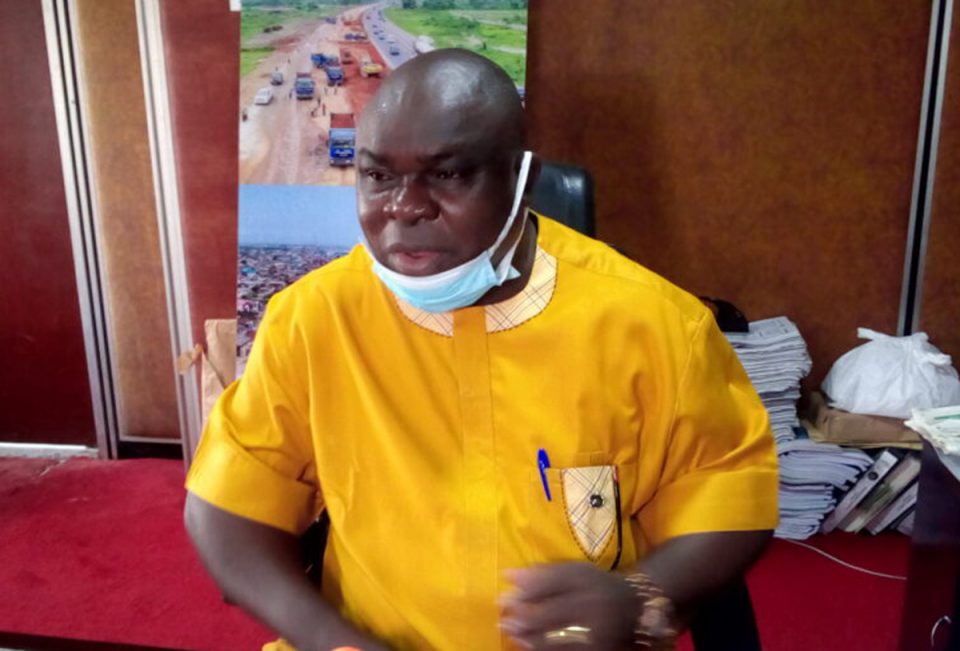The Federal Controller of Works in Lagos, Mr Olukayode Popoola, says adjustments to be made on existing diversion points on the Third Mainland Bridge will now last between Jan. 15 and Feb. 13.
According to Popoola, the decision to extend the diversion shifts to four weeks from Jan. 15 to Feb. 13 was reached at a stakeholders meeting.
He said on Wednesday in Lagos that the bridge was not going to be closed and that the traffic switch over period was still the same.
He added that the existing traffic arrangements were still valid, but the contractor would move the current diversion point towards Oworonsoki and close the Adekunle slip road on the Lagos Island bound carriageway.
He said that the meeting which held between the contractor, Federal and Lagos State government officials, traffic regulatory and law enforcement agencies was to review the construction modalities.
The controller said this was to allow for additional time for removal and replacement of expansion joints along the Adekunle Ramp, which were longer and almost twice the size of other expansion joints.
“The period for the diversion shift will now be from Jan.15 which is Friday to Feb. 13. It will take four weeks, no more two weeks because of the volume of work.
“They have to remove the expansion joints. As we are talking now, they have removed two, the one that is before that Adekunle Ramp down has not been opened or removed.
“That will take time, not less than 10 days before they break and remove it, then we will now cast the concrete. So that is why we are taking four weeks,’’ he explained.
He further said that it was discovered that the initial two weeks set for shifting of the diversion was not enough, hence the review to ensure the concrete got set before reopening the slip road to traffic.
The said that there were additional works to be done after the completion of the expansion joints, adding that, the work on the bridge will be completed on Feb. 22.
He appealed for the understanding of road users saying that, the old existing diversions were still valid with the traffic management team on ground to ensure easy traffic flow.
“The way the Third Mainland Bridge is being used is the same way the motorists are still going to use the bridge. For instance, 12:00 midnight till 12:00 noon, people coming from Oworonsoki, will still be using their lane coming to the Island,’’ he said.
The controller said that the modification only affected the Adekunle slip road, hence road users would not be able to use the ramp to connect Yaba, and would not be able to use the ramp from Yaba to the bridge.
He added that the diversion points would be shifted backward about two kilometres away towards Oworonsoki, affecting only those who use the Adekunle slip road.
“We are appealing to Lagos residents to bear with us. We are doing our best to ensure we do not extend the work beyond Feb. 22.
“We are trying to make sure that driving on Third Mainland Bridge is as comfortable as possible,’’ he said
The Third Mainland Bridge, which was going through a series of repairs, was partially shut on July 24 for another round of rehabilitation works.
The repair, expected to last six months, was extended by one month due to the recent #EndSARS protests in the state, which extended the completion date from January to February.
The construction was initially divided into two phases of three months on each carriageway; starting with the Oworonsoki bound carriageway whose completion dragged to four months.
Traffic was partially diverted on a stretch of 3.5km where construction is ongoing between Adeniji Adele Ramp and Ebute Meta, while different time belts were allotted for traffic diversions on the bridge.
The 11.8km bridge is the longest of the three bridges linking Lagos Island and the Mainland.
The bridge starts from Oworonshoki, which is linked to the Apapa-Oshodi Expressway and the Lagos-Ibadan Expressway, and ends at the Adeniji Adele Interchange on Lagos Island.
Constructed in 1990, the bridge was the longest in Africa; until 1996 when the Oct. 6 Bridge in Cairo was completed.




